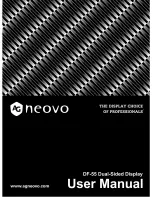
instruction book for the flash unit.
To find the correct aperture to use, divide the guide number by the distance between the flash and the subject. For instance, suppose
you find that the guide number of the bulb with the film in use, and the shutter speed required is 160. If you then want to take a
photograph at a distance of 10 ft. from the subject, divide 160 by 10 = 16. Therefore the correct aperture to use is f 16. Conversely if
you want to use a definite aperture, say f 8, then the correct flash distance is given by 160 / 8 = 20. So the flash must be 20 ft. from
the subject.
Synchro-Sunlight
For fill-in flash in daylight, use the normal exposure for the sunlit parts plus a flash exposure based on a doubled guide number.
Example:
Exposure meter reading at 1/60 sec. - f 16.
Guide number for the flash at 1/60 sec. - 120.
The guide number doubled is 240.
Divide 240 by 16-15.
That means that the flashgun should be 15 ft. from the subject. It is advisable to use an extension cable between camera and
flashgun This enables you to place the flash farther away from or closer to the subject than the camera
FLASH EXPOSURES
The shutters on the lenses of the model 500C (left) carry a
synchronizing lever with three positions: V, X, and M. the V
position is the setting for the self-timer, the X and M positions
are for different types of flash synchronization (page 54). On the
original Super Wide there are only two settings: X and M (right).
The flash cable plugs into the socket lever (left). A cable bearer
fits into one of the two sockets in the left hand side of the
camera to prevent accidental pulling out of the cable.
The model 500C also carries a further flash contact in the side of
the camera (right) for synchronization of the auxiliary shutter in
the camera back (#).
The models 1000F and 1600F have a synchronization contact built into the
finder shoe at the side of the camera. The synchronization is here adjustable
by moving the small control above the shoe to a series of numbers from 1 to
5. To connect the flash, a flash shoe fits into the finder shoe. The flash shoe
carries either two co-axial sockets, or two pairs of two-pin sockets (older
version). The outlets in each case are marked "flash" (for flash bulbs) or
"strobe" (for electronic flash).
For these models a special frame finder used to be available carrying similar flash outlets in
the finder foot, to permit connection of flash units when working with the frame finder.
www.mr-alvandi.com
Содержание 1000 F
Страница 18: ...WILD LIFE www mr alvandi com ...
Страница 52: ...THE CUT FILM ADAPTOR www mr alvandi com ...
Страница 54: ...Daylight Exposure Values www mr alvandi com ...
Страница 55: ...Filters for Black and White Film www mr alvandi com ...
Страница 57: ...Colour Temperatures and Light Sources Light Balancing Filter Data Filter Equivalents www mr alvandi com ...
Страница 59: ...Close Ranges with 50 60 mm Distagon and Planar 80 mm www mr alvandi com ...
Страница 60: ...Close Ranges with 120mm S PLANAR 150 200 mm SONNAR www mr alvandi com ...
Страница 61: ...Focusing Ranges with the Extension Bellows Shutter Speeds to Arrest Movement www mr alvandi com ...
Страница 62: ...Conversion of Film Speed Systems Colour Films www mr alvandi com ...
Страница 63: ...Black and White Films www mr alvandi com ...
Страница 64: ...www mr alvandi com ...
















































